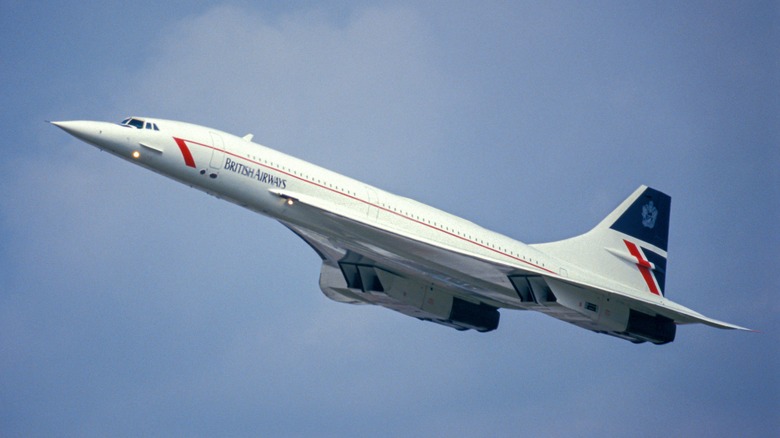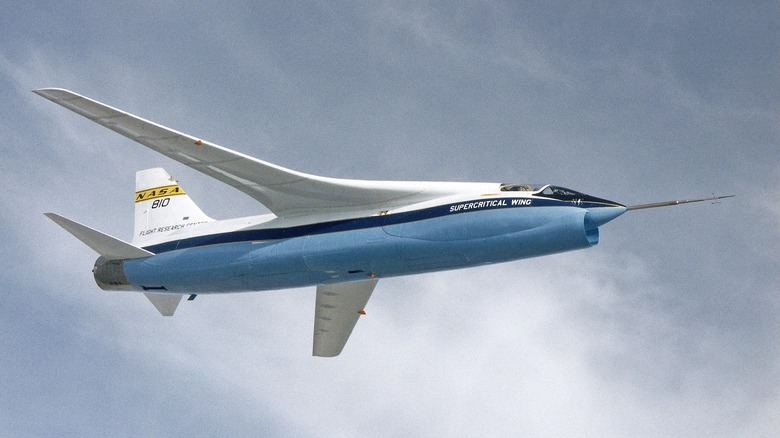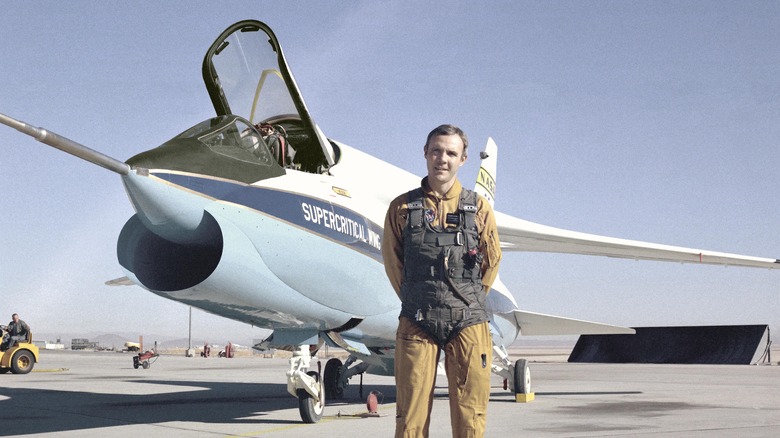F-8 Supercritical Wing: NASA's Unconventional Aircraft That Changed Commercial Flight Forever
In 2023, very few people can claim to have flown on a supersonic airliner, but for a while in the 1960s, it looked as if futuristic planes like the Concord would be a common mode of air travel. In the end, though, it was the comparatively slower airliners like the Boeing 747 that "shrank the world," while Concord proved to be a one-off. It was the gilded carriage of a privileged few, operating on a handful of prestige routes until retiring in the early 2000s.
Why didn't supersonic airliners catch on? Simply put, they weren't economical. The high drag experienced by planes at Mach 1 and above imposes enormous fuel costs, while the smaller cabins could carry only a fraction of the passengers accommodated in slower "wide-body" planes. After the oil crisis of the early 1970s, airlines lost their appetite for gas-guzzling planes. Rather than focusing on getting passengers from A to B as quickly as possible, they needed to figure out how to do it cheaply.
For aircraft designers, this meant developing a new wing design optimized for high subsonic flight, where conventional airliners are already the most economical. In the early 1960s, aeronautical engineer Dr. Richard T. Whitcomb started working on the problem of economical high-speed flight, specifically, on a so-called "supercritical" wing to reduce drag. The speed at which this occurs is known as the "critical" speed, according to NASA. A "supercritical" wing is designed to halt the formation of a shock wave, thereby creating less drag, better controllability, and reduced fuel consumption.
Enter the TF-8A
Compared to a conventional wing, the supercritical wing, which NASA abbreviated to SCW, "is flatter on the top and rounder on the bottom with a downward curve at the trailing edge," according to Defense Department records. Wind tunnel tests indicated that the design had potential, but NASA knew that such an unconventional design would need to be tested before the commercial flight industry could be convinced of its benefits.
Rather than building a new plane entirely from scratch, NASA chose to convert an existing airframe — a Vought F-8A Crusader obtained from the U.S. Navy. The Crusader boasted a speed capacity up to Mach 1.7. It had an innovative wing design, which hinged upwards during slow-speed flight, to improve controllability when landing on aircraft carriers.
The tail-mounted elevator was to be modified to provide roll control. When studies indicated that such a design would lack adequate control at low speeds, conventional ailerons were included in the wing design. The supercritical wing was manufactured by Rockwell International's North American Aircraft Division and delivered in December 1969. With the new wing attached, the converted Crusader was designated the TF-8A.
Flight Tests and Legacy
Although the TF-8A's slender, elegant supercritical wing was ultimately equipped with fixed wings for roll control, it lacked flaps to increase lift at low speeds. As a result, the TF-8A required a lengthy runway to take off and an even longer one to land. Its 200 mph landing speed meant that its only choice was to land on Rogers Dry Lake in the Mojave Desert. The TF-8A first flew on March 9, 1971, with lead project pilot Tom McMurtry at the controls. He took the TF-8A up to 9,200 feet and achieved a maximum speed of 260 mph. Later flights would be much faster, and its first supersonic test flight took place on May 26, 1971.
Testing ran through May 1973, during which time NASA found that "results showed the SCW had increased the transonic efficiency of the F-8 by as much as 15 percent and proved that passenger transports with supercritical wings could increase profits by 2.5 percent over aircraft with conventional wings." This might not sound like a lot, but it meant an influx of $78 million per year then — equivalent to almost $500 million today.
Now, this supercritical technology is incorporated in the wing designs of virtually all modern airliners, including the massive Boeing 777. The one and only TF-8A survived to be preserved at NASA's Dryden Flight Research Center in California.


